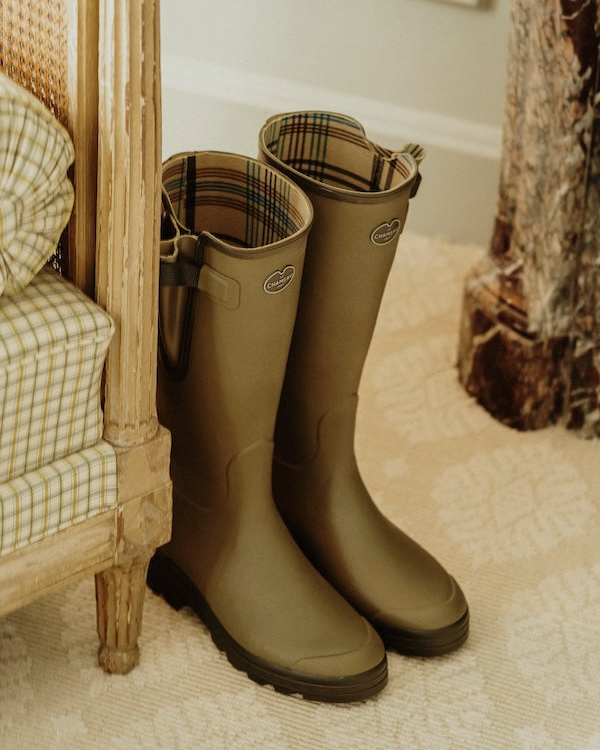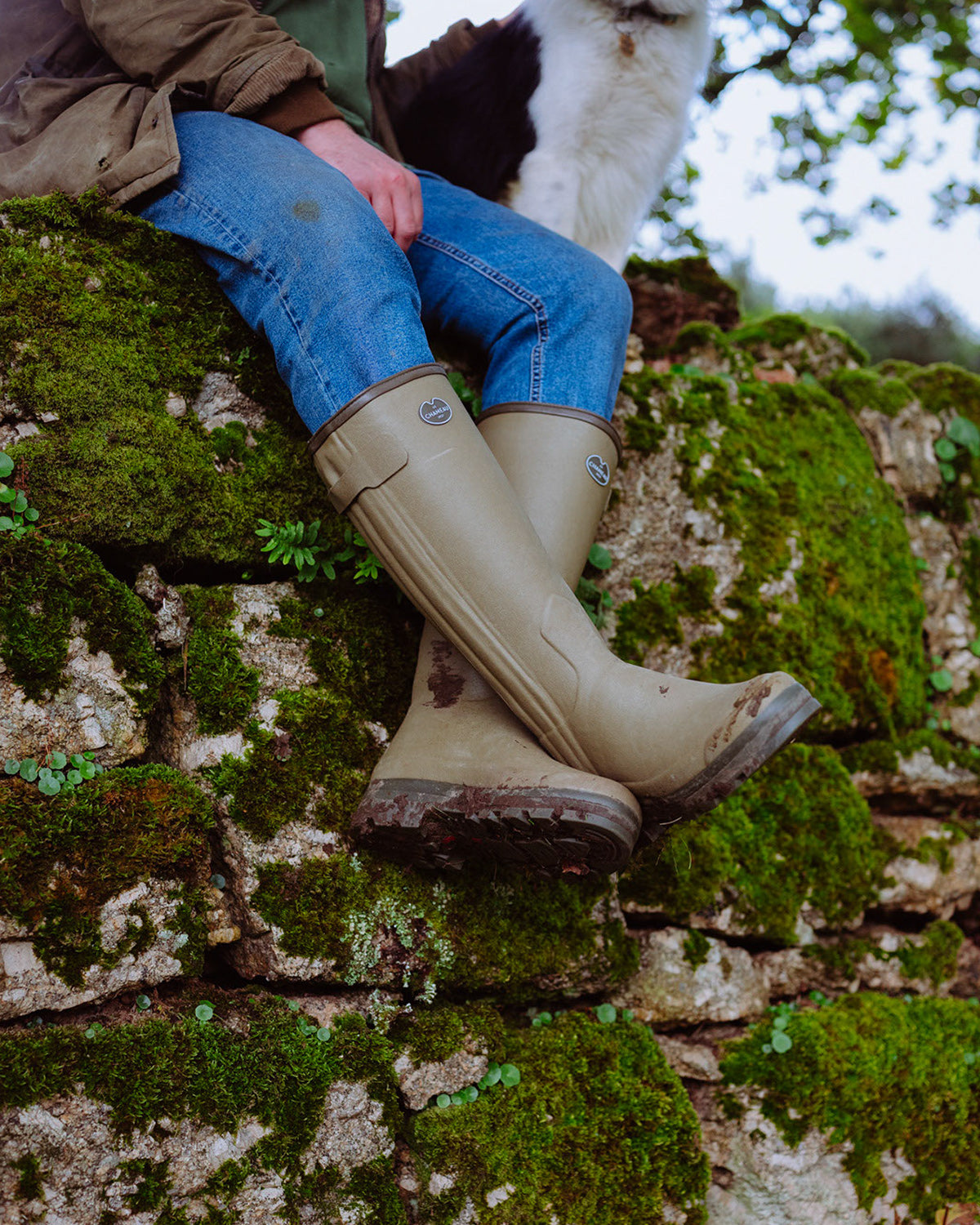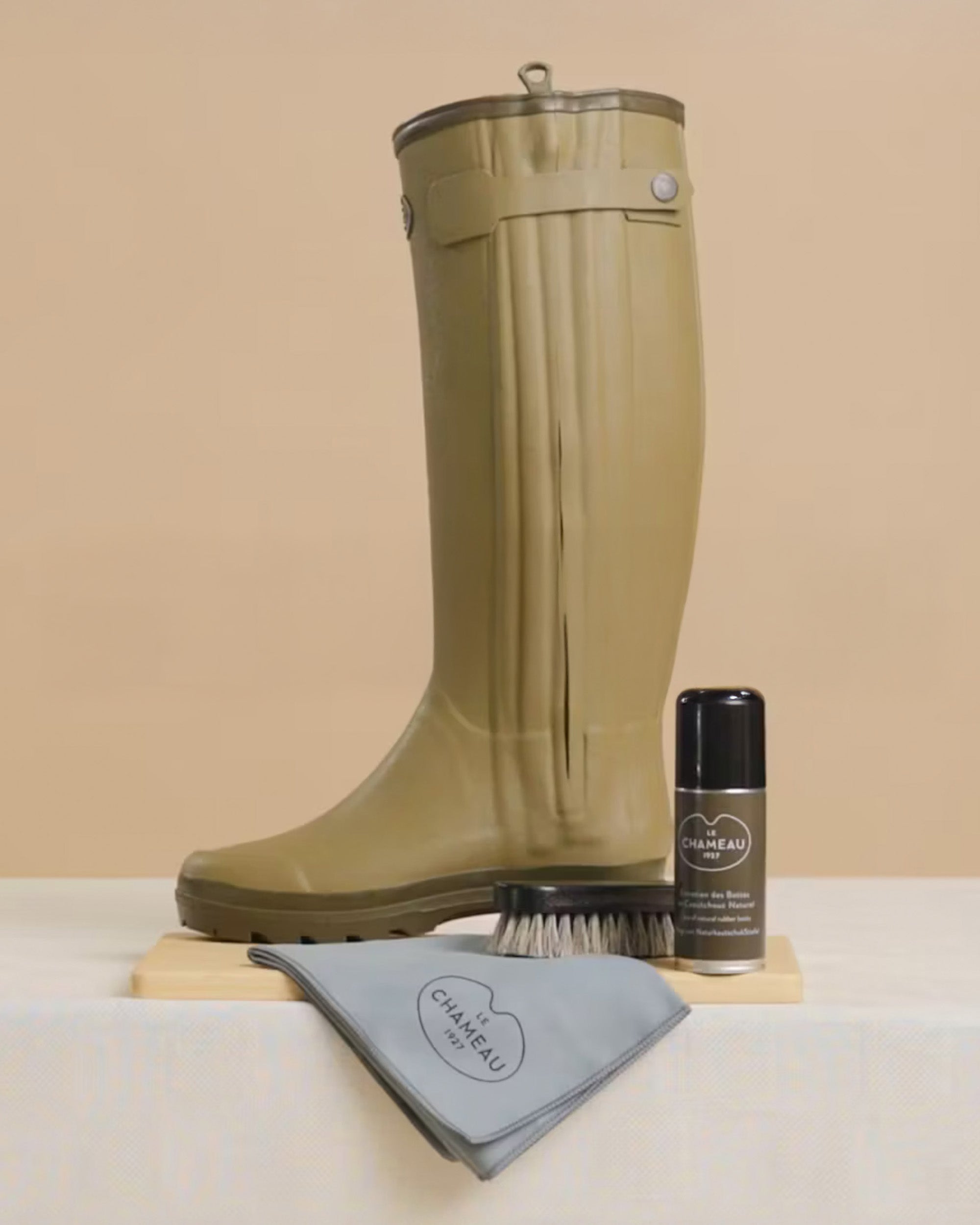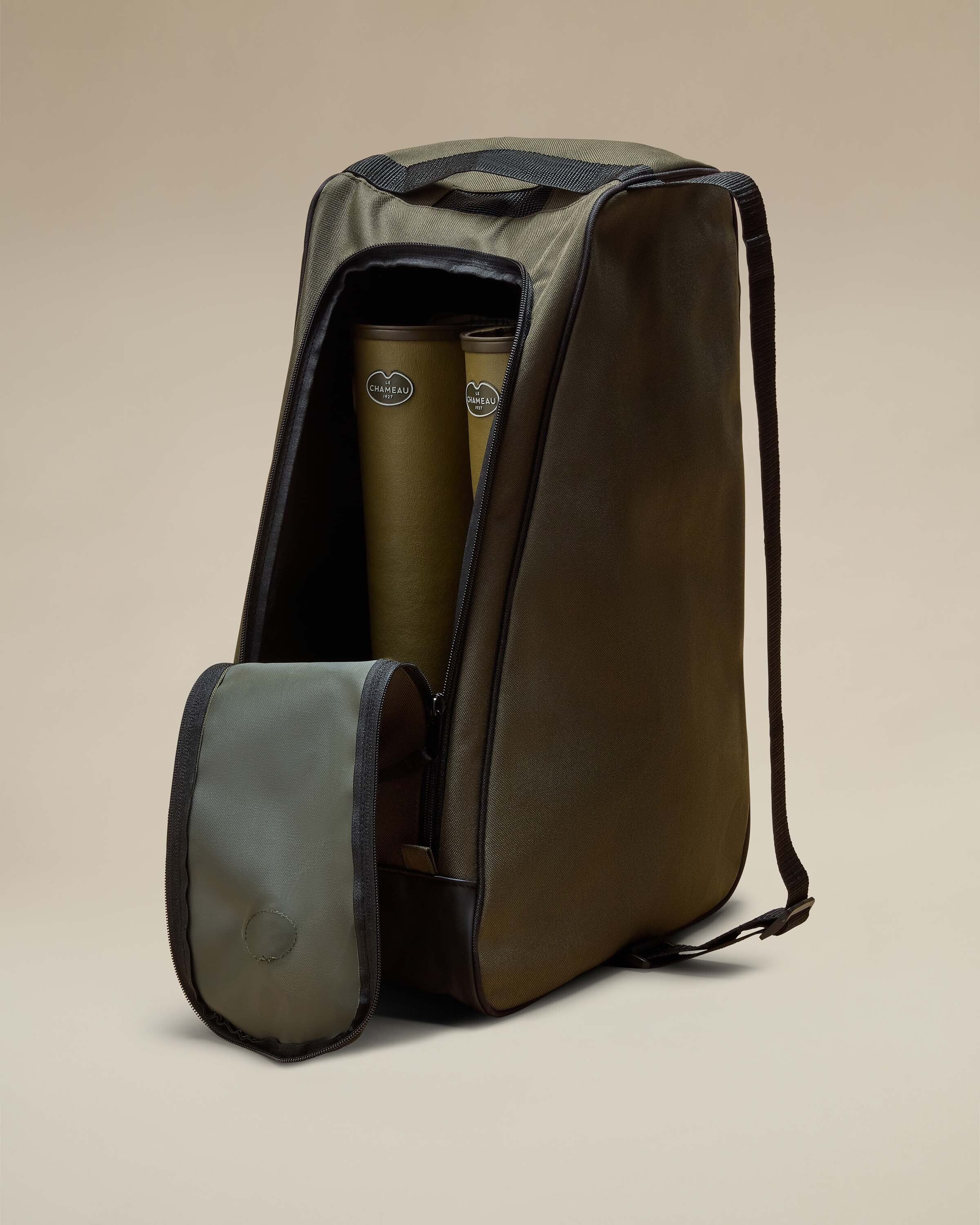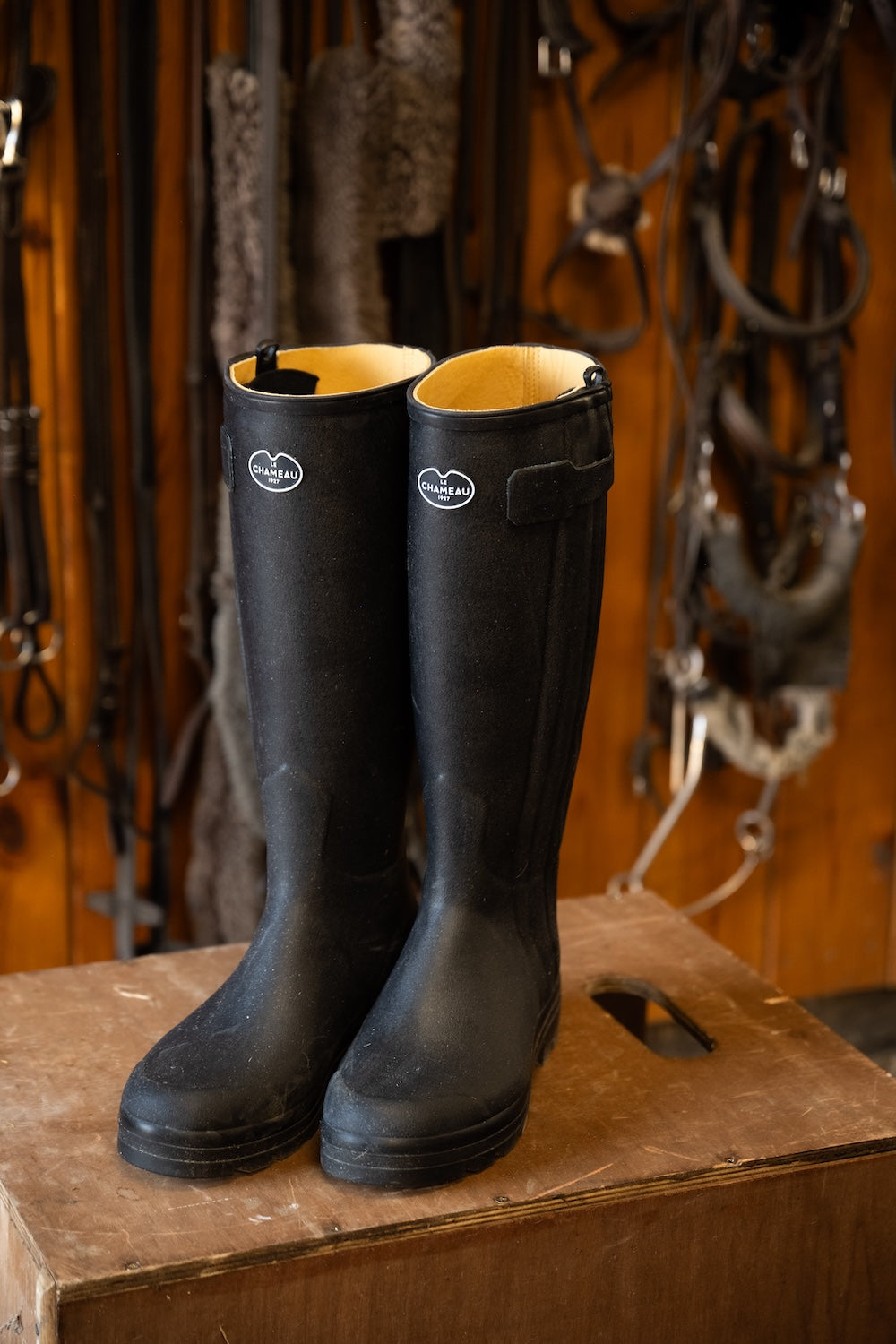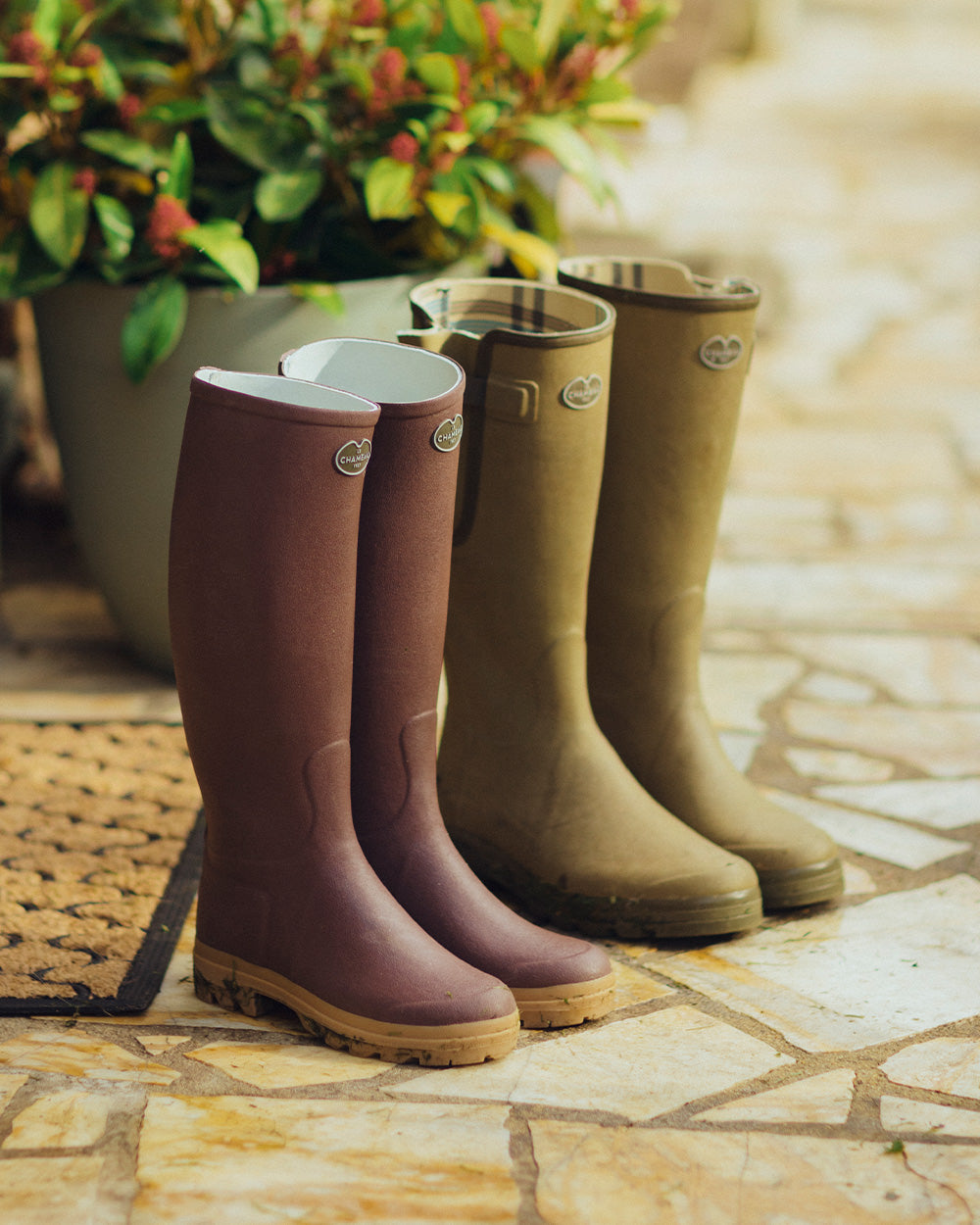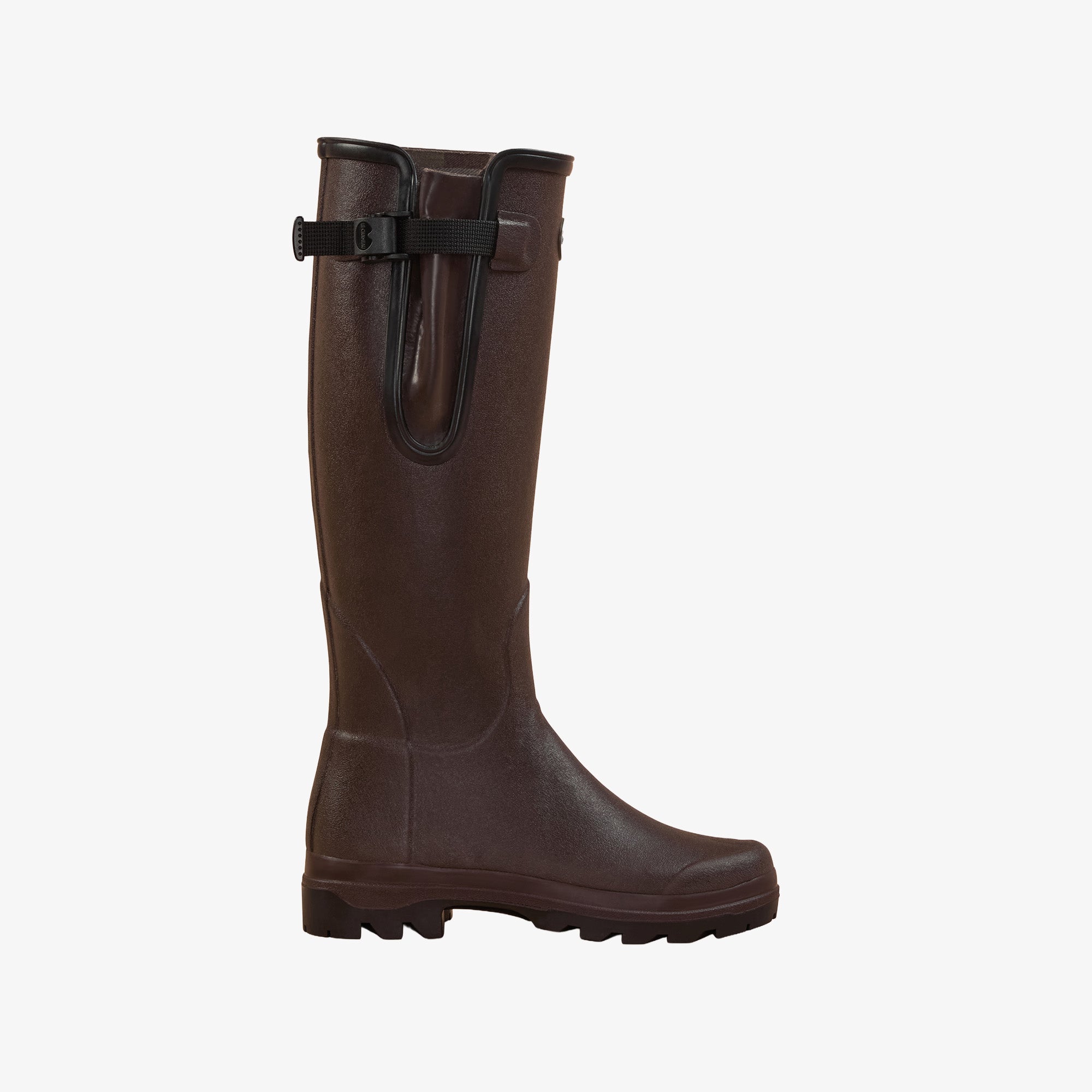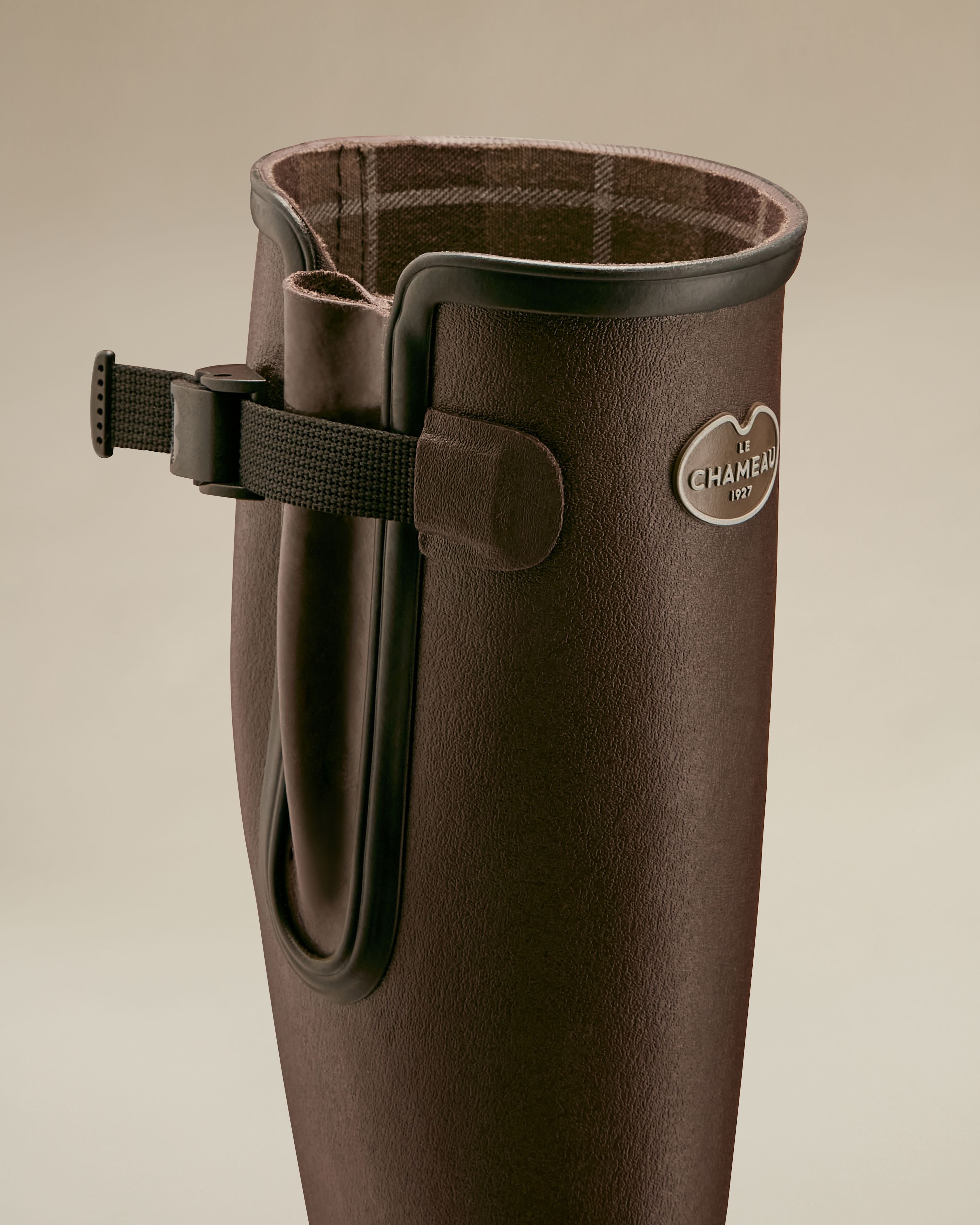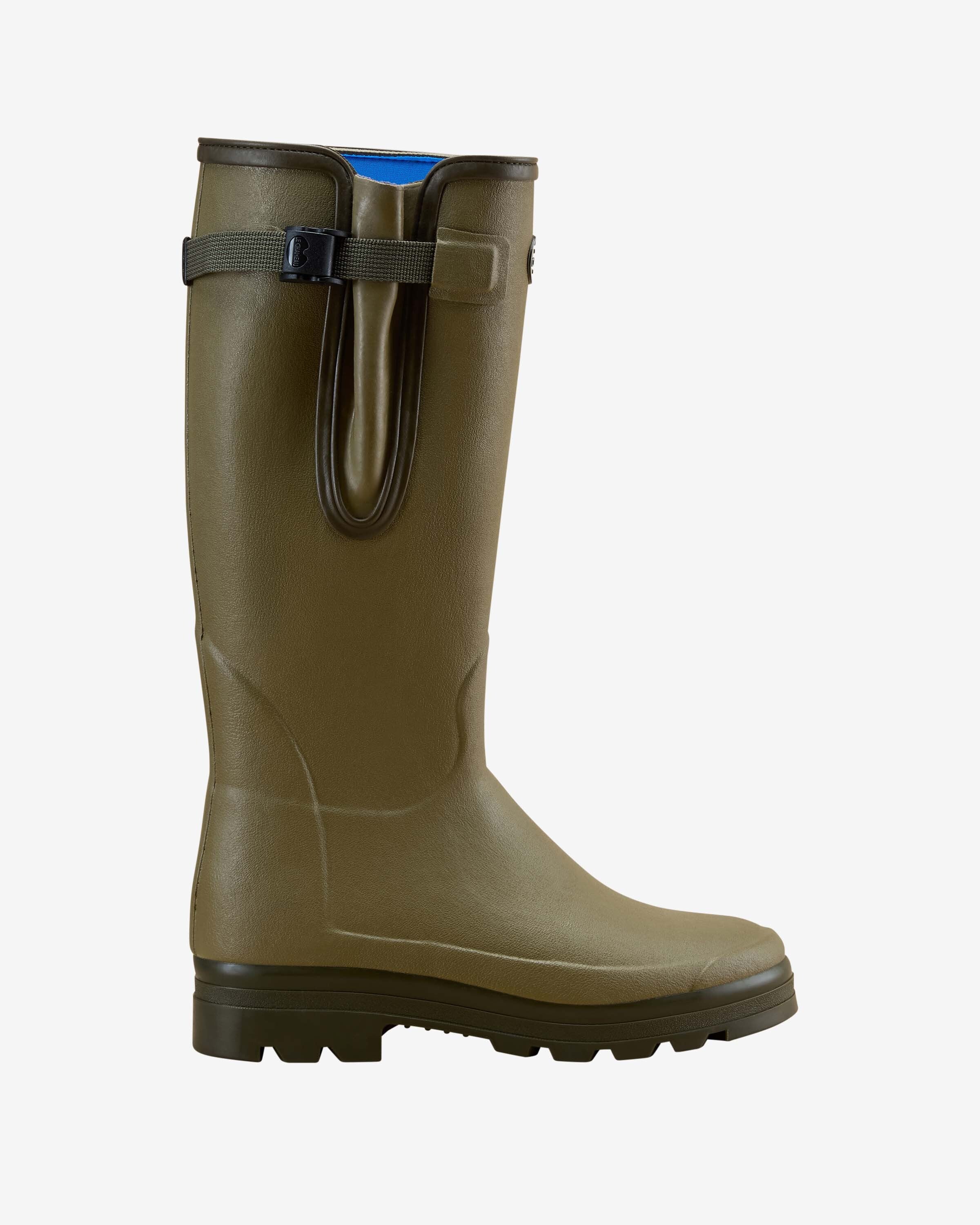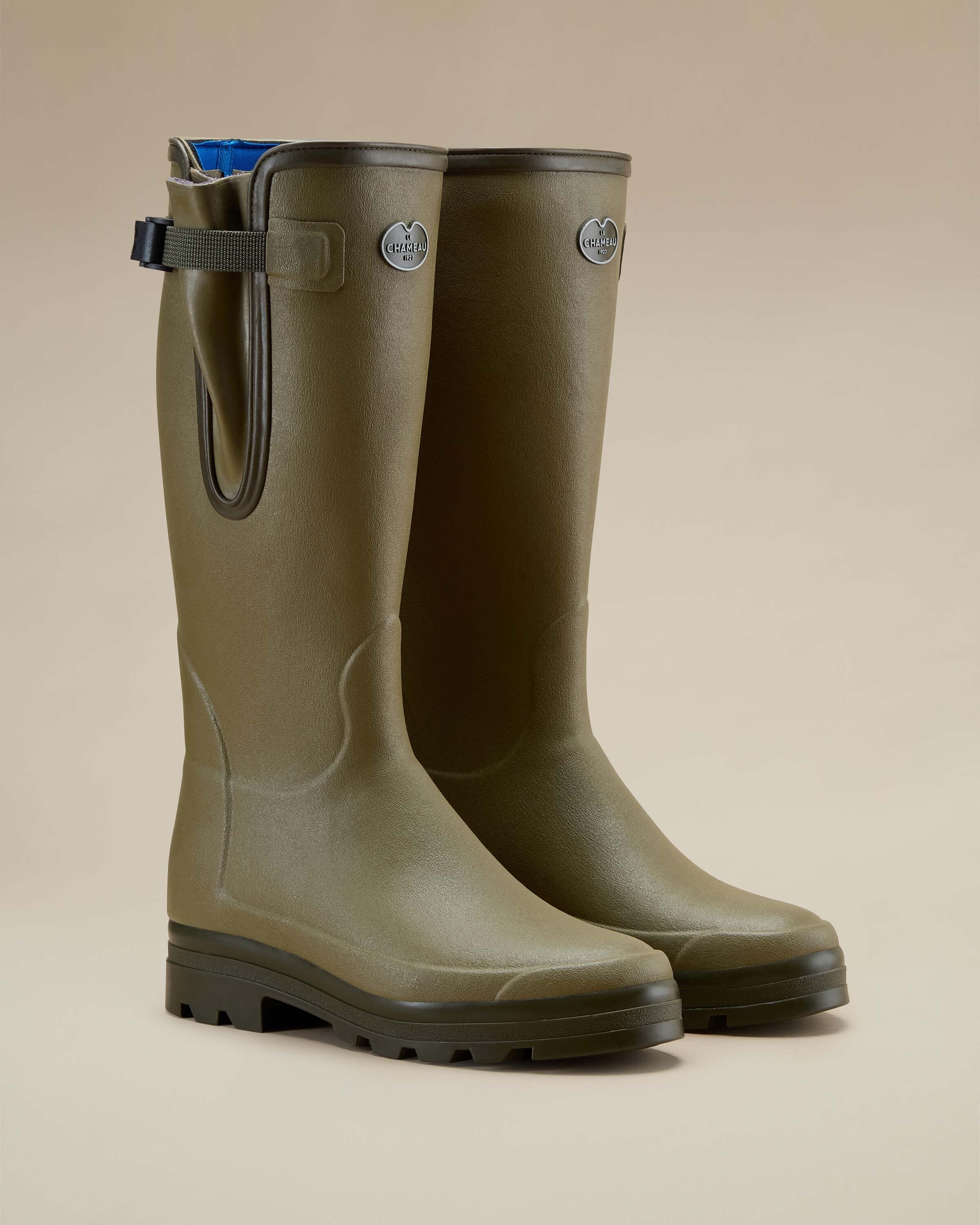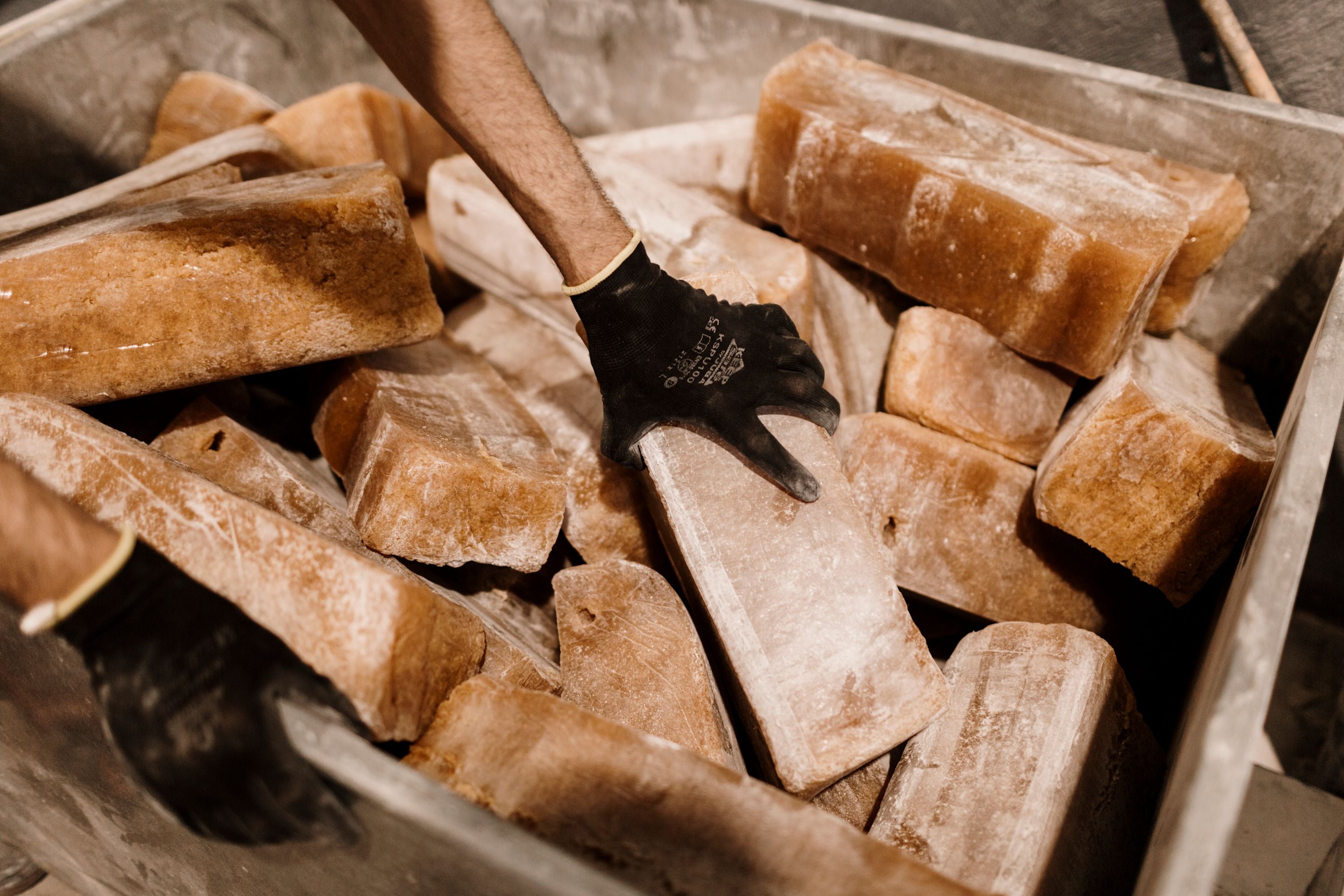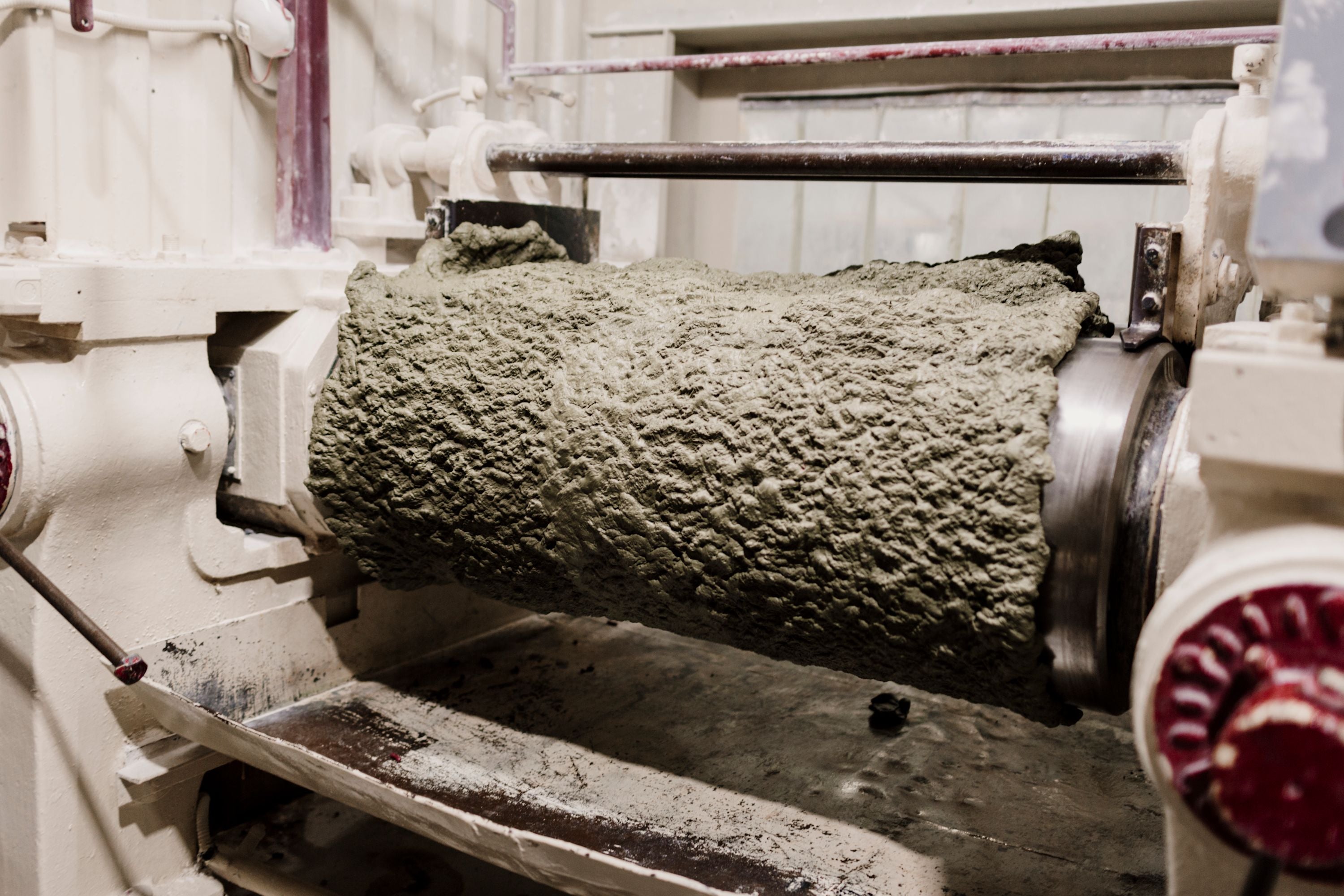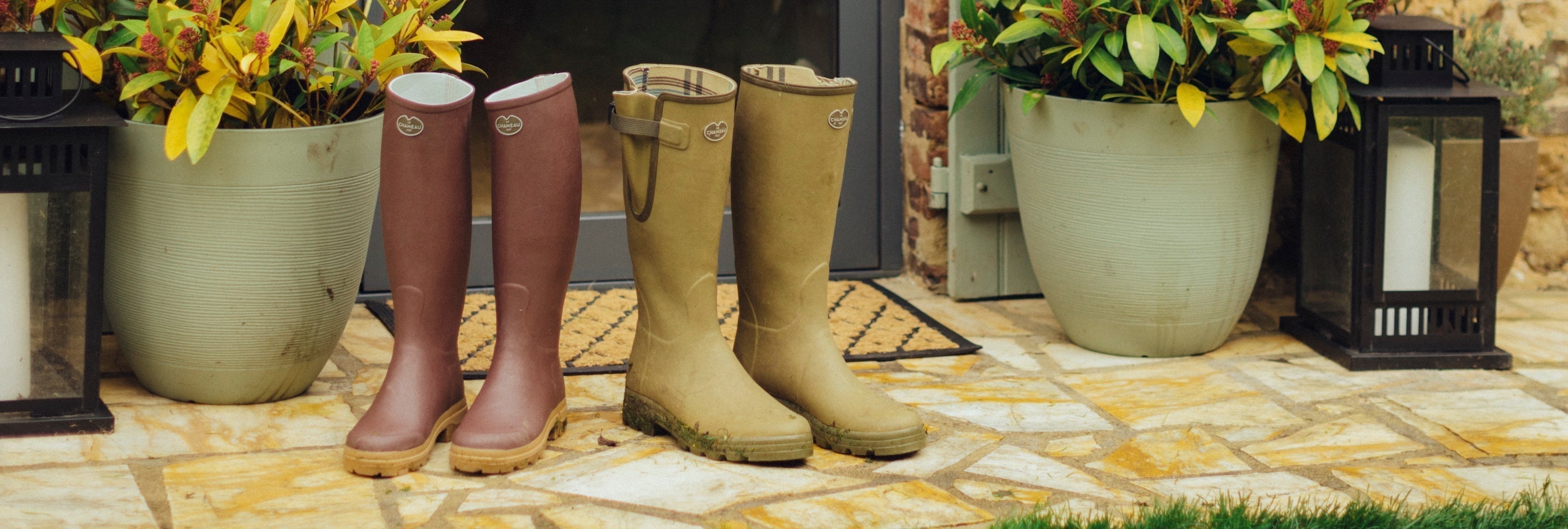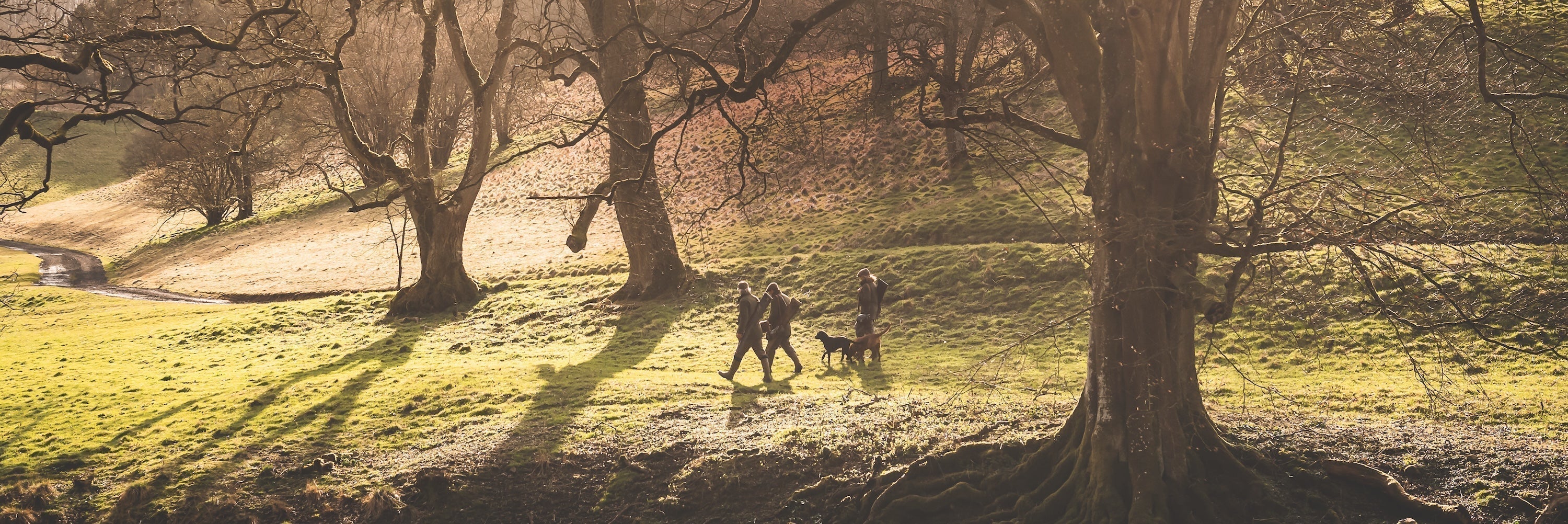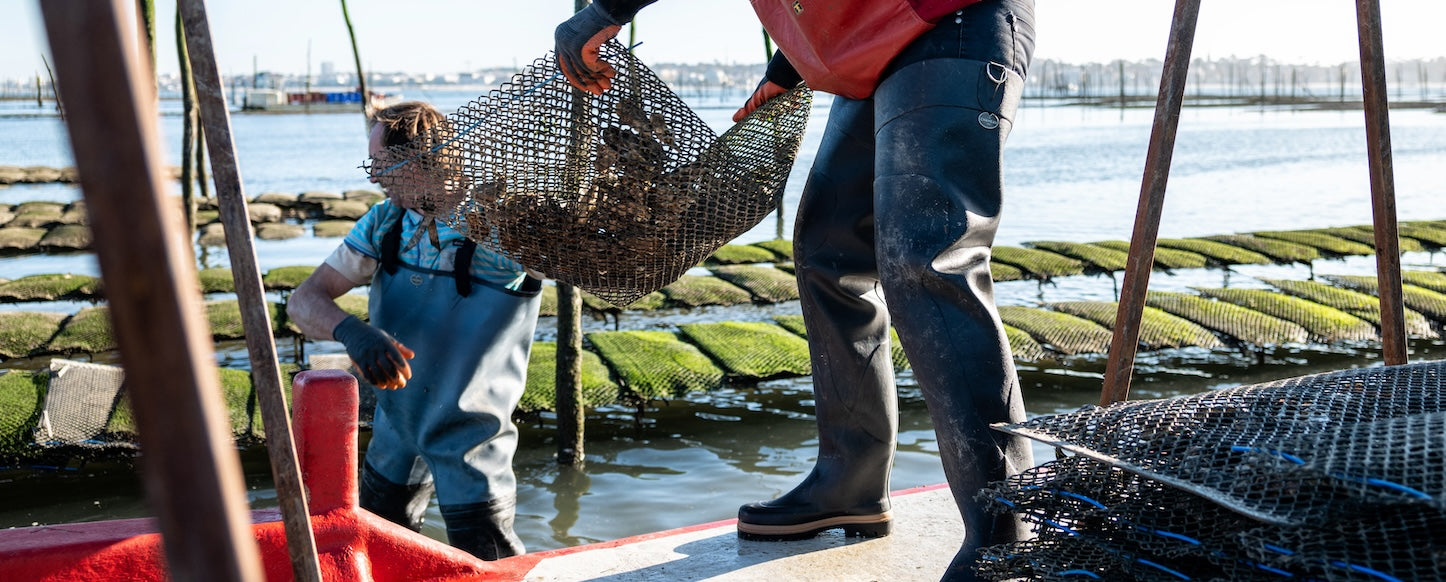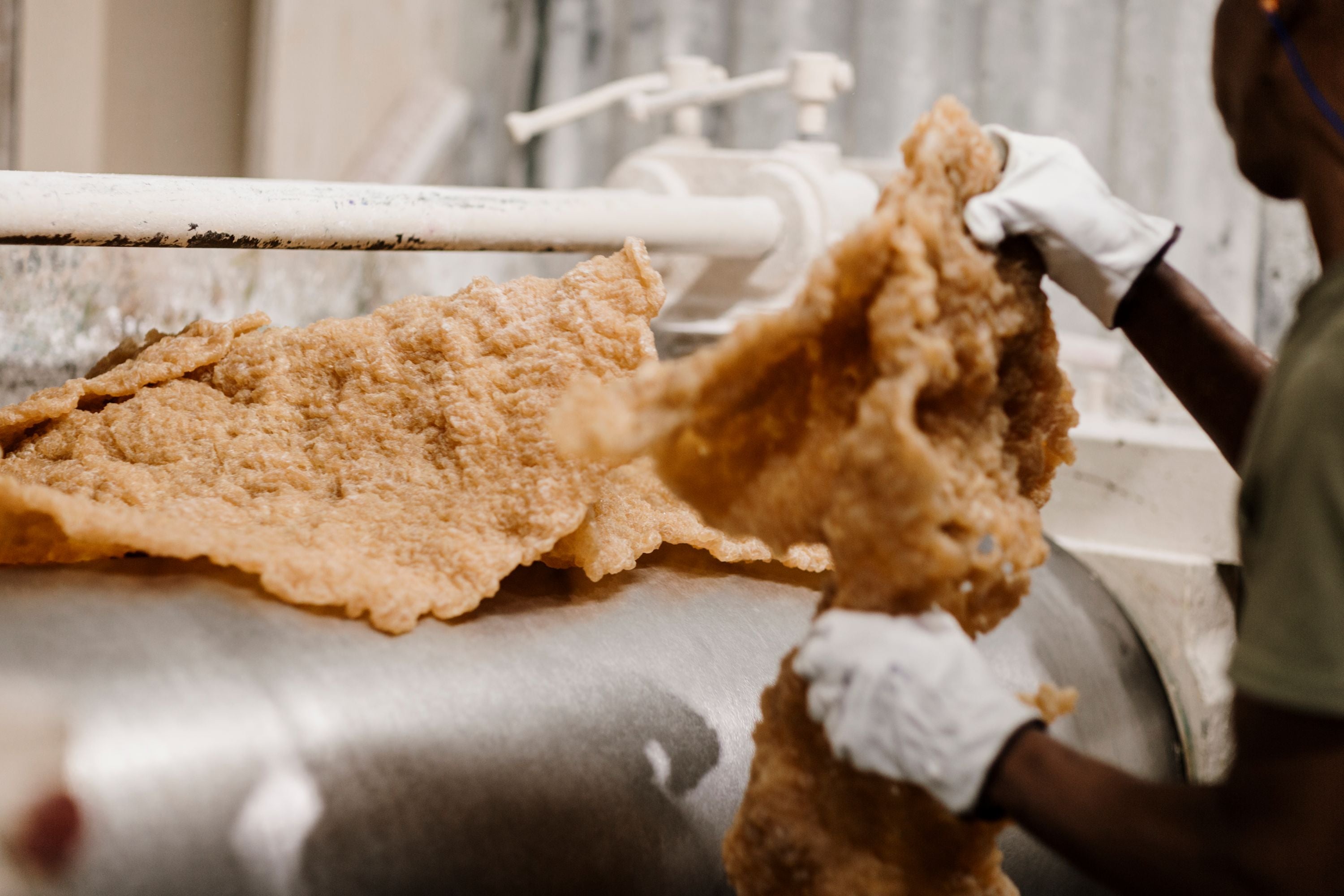
Natural Rubber vs Synthetic: What Sets Them Apart
If you are summiting a mountain, heading feet first into your favourite festival, or simply wish to walk the dog and explore the local landscape around you, you need the right wellies made of suitable and sustainable material to endure both the seasons and its elements, whilst excelling in comfort and reliability.
Since 1927, Le Chameau has encouraged generations of explorers on land and sea with our rubber Wellington boots handcrafted by master bootmakers who blend traditional methods with the latest innovative technology. We are proud to use Grade A natural rubber in the craftsmanship of our boots, a material that reflects the superior, sustainable and heritage-led values aligned with Le Chameau.
But what is the difference between natural rubber and synthetic material? And why, when crafting our natural rubber wellies, do we pride ourselves on using natural rubber and the best source of natural rubber at that? Let’s explain.
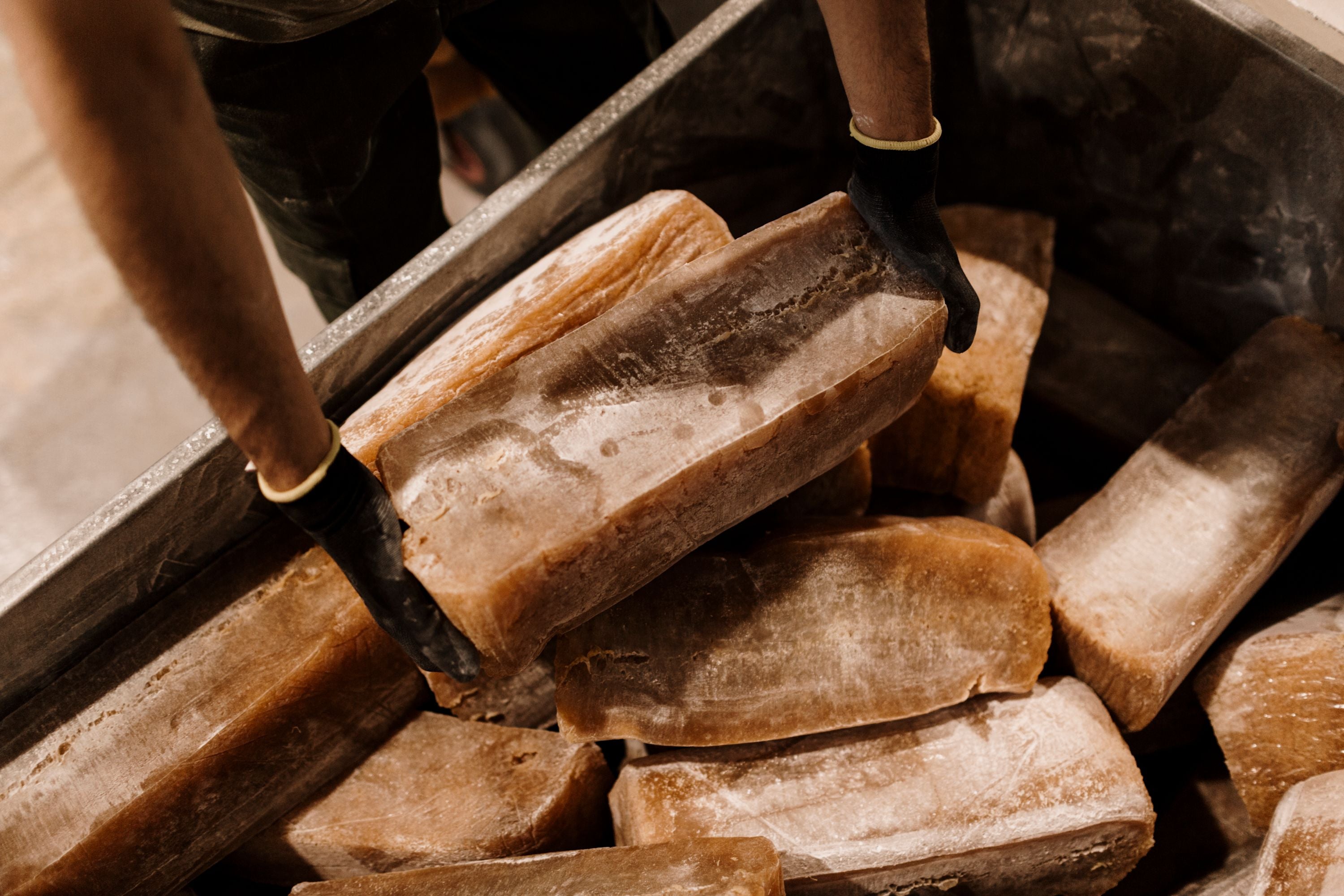
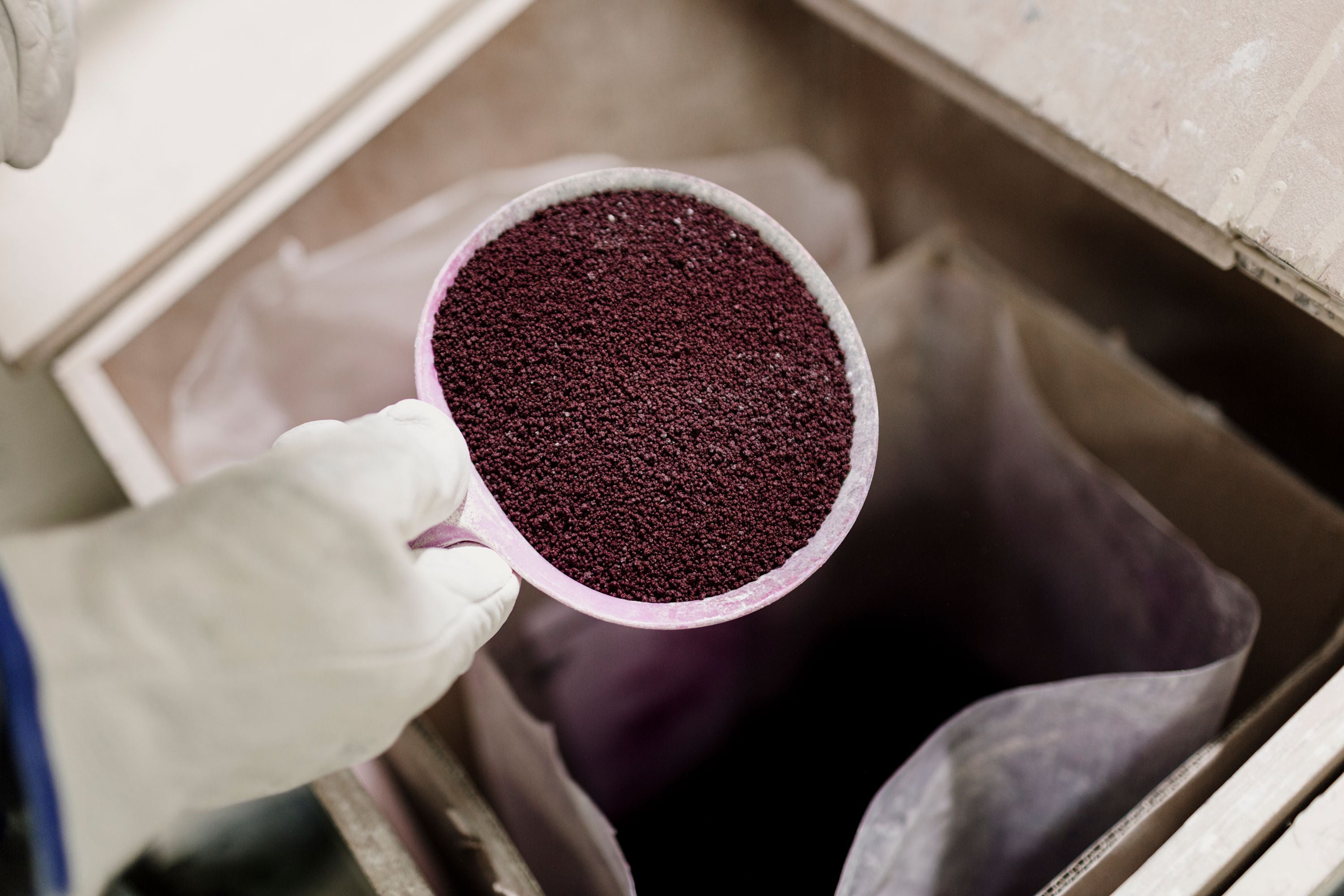
Understanding the Material Differences
When looking at the difference between natural rubber and synthetic materials – like Polyvinyl chloride (PVC), Polyurethane (PU) and Ethylene-Vinyl Acetate (EVA) – for your wellies, it’s important to understand both the source of each material and how they are produced.
Let’s look at natural rubber first. The majority of natural rubber is sourced and produced in Southeast Asia. To know the quality of rubber, it is important to understand a number of factors including, in which season the rubber is sourced (spring rubber is best), climate, purity and tree quality. Le Chameau sources its rubber from Vietnam, where we have been working with the same highly regarded plantation since 2005.
To produce natural rubber, each Pará rubber tree – otherwise known as Hevea brasiliensis – is ‘tapped’, producing raw latex, a milky white substance. Sensibly harvested, this can be done without harming the trees. The liquid latex is allowed to coagulate and can then be collected and processed into its dry form which is packed into loaves. The loaves are graded from A to D – the grading determined by colour, purity and stickiness. Le Chameau uses only Grade A rubber, which is light coloured and has low ash and dirt content. These loaves of raw Grade A rubber are then shipped to our workshop in Morocco.
Now, let’s look at the synthetic materials used in the production of Wellington boots. Synthetic wellies can be made from polyvinyl chloride (PVC), a plastic produced by mixing additives into a powder, which is then melted at high temperatures and injected into a boot-shape to be moulded and set. Another material used to make synthetic wellies is polyurethane (PU), a plastic made by reacting polyols and isocyanates, both derived from crude oil. It can include a range of components and can be moulded into virtually any shape. Ethylene-Vinyl Acetate (EVA) is also used in making synthetic wellies. Being a polymer, its foam-like composition is made by filling a pre-heated mould with EVA resin and various foaming agents.
Sustainable Wellies: What’s the Best Choice?
It can be difficult to define which choice of Wellington boot material is most sustainable; natural rubber wellies or synthetic wellies. When we talk about the sustainability of products, it’s important to note, in reference to the following materials, it depends on its source and methods of production and their subsequent effects on the natural environment.
Natural rubber is the only non-synthetic rubber. The sustainability of natural rubber differs due to the production methods, purity of product and properties involved, owing to it being graded. The raw material itself is indeed renewable and is the most ‘close to nature’ choice. Here at Le Chameau, we are proud to follow principles set out by the Ethical Trading Initiative and the Fairtrade Foundation.
Polyvinyl chloride (PVC) can be thought of as sustainable due to its longevity and the potential to be recycled, yet there are some issues relating to its sustainability when it comes to the amount of energy used to recycle them with possible dangerous leakages when landfilled.
Polyurethane (PU) is not fundamentally sustainable due to its base deriving from petrochemicals and being non-biodegradable. It is, however, sustainable in terms of being recyclable, but again, the amount of energy used to recycle should be questioned.
Traditional Ethylene-Vinyl Acetate (EVA) originates from fossil fuels so is therefore not sustainable. There have been advances in plant-based EVA, produced from such plants as sugarcane, which is seemingly a more sustainable choice as it has a lower carbon footprint.
Environmental Claims: Le Chameau’s Pledge
Le Chameau supports any environmental claims (for instance, recyclable, compostable, made with...) with evidence and meets Competition and Markets Authority (CMA) standards. We supply an ethical audit using an internationally recognised standard, such as a SEDEX or SMETA audit for all factories used in the production process that are outside of the EU, USA, AU/NZ.
We don’t accept products where suppliers are unwilling or able to share details required about their source and production process. We only use Grade A natural rubber which is the highest quality natural rubber that adheres to specific standards, such as British Standard BS 1154. Grade A is made with a very high consistency of natural rubber, giving it superior durability, flexibility, and therefore, comfort.
Which lasts longer natural rubber vs synthetic?
Natural rubber has a higher tear resistance and higher tensile strength, especially when it is cared for appropriately, and it can be patched. The naturalness of the rubber makes them comfy and flexible. Synthetic wellies can be durable and last long as well, however due to their tough shell they can crack with flexing. They are also less forgiving on the foot, and the foam component can wear. We believe that natural rubber is the most authentic and eco-friendly choice when it comes to choosing your Wellington boots.
Which is better for everyday wear: natural or synthetic?
Natural rubber wellies are normally hand-built and vulcanised, producing a boot that is flexible, ‘moves with your step’ and it is built for comfort as well as reliability – like every pair of Le Chameau boots. Whereas, PVC, PU and or EVA boots are injection-moulded, which can be efficient and durable, however the exterior of the boot can often feel more rigid and plastic-like resulting in a less comfortable boot for everyday wear.
Why Natural Rubber Boots are More Expensive?
To answer this question, we need to understand two things; the work and dedication that goes into producing natural rubber as a product, then the skill and passion involved in crafting the boots.
Here at Le Chameau, we pride ourselves on sourcing the best materials for our natural rubber Wellington boots, working with master bootmakers to produce a product that is superior in quality and reliability and luxurious in comfort.
Did you know Wellington boots are also called rain boots and gumboots: why the difference?
It takes two years to qualify as a master bootmaker and 8 hours to make a pair of Le Chameau boots. To give you an idea of the work that goes into the making of our boots, here’s our sourcing and process.
Our Process: Mastering Natural Rubber Boots
Le Chameau only sources Grade A rubber from a trusted producer we have been working with since 2005. Grade A natural rubber is the highest grade, being light in colour and low in ash and dirt content, meaning that it is cleaner and the finished product will be of superior quality including physical properties like higher tensile strength and improved heat aging resistance.
The raw Grade A rubber is shipped to our workshop in loaves, where we add a few secret ingredients to produce our famously supple Chamolux rubber. This recipe is still based on Claude Chamot’s, our founder, original mix, producing soft, supple and durable rubber which forms the basis of all our boots. This material ensures a unique fit and superior comfort and durability.
Once the right material has been sourced and produced, it’s all about our master bootmaking. In the workshop, the rubber material is rolled around large metal rollers, rather like a giant pasta machine, producing first a thick slab, which is then cut and fed into the next roller, until the specific thickness required emerges from the final roller – thick enough to have an integral strength, but thin enough for each master bootmaker to manipulate and craft the shape of boot. Using carefully crafted pattern templates, the rubber is cut to shape and hand trimmed. Layer upon layer is sandwiched together with liquid latex, producing an ever stronger and more stable construction. The next stage of the process is to stretch the rubber pieces over an aluminium boot last, gradually forming the famous Wellington boot shape. The trims and small details are then added.
Then it’s time to mould the sole. Across all our styles of boots, the base sole is made by adding the formula of rubber to the bottom of a two-part mould. The mould is closed, put under pressure and cooked. As the rubber heats and spreads through the mould, it forms the shape of the sole.
Our boot linings are crafted in a dedicated area of the workshop, using machinery to cut the large pattern pieces and following strict quality checks to ensure there are no flaws or errors. The pattern pieces are then constructed to form the internal shape of the boot. We provide a range of different linings, from insulating and comforting neoprene to a premium supple leather, or a lightweight, fast-drying jersey.
Once all the components of the boot are ready – the rubber cuttings, moulded sole and linings – the boot is now ready for assembly. This is where our master bootmakers really demonstrate their skill. The lining is carefully bonded to the rubber, and the boot is assembled. Full-length zips are added to the Chasseur styles, gussets are added to the Vierzon, and our logo badge is placed. Finally, the base of the aluminium last is covered with a special formula of latex to ensure the sole is bonded and every boot remains durable. The sole is carefully placed and, with the soft touch of a rubber hammer, secured into place.
Once the boot has been constructed, it is essentially ‘cooked’ through a process called vulcanisation, stabilising the rubber and fusing the many layers of rubber and lining together, forming one incredibly strong structure. It also ensures optimum strength, flexibility and durability. Once cooled, every boot is tested in water to make sure it is fully waterproof. Another quality control check and a polish follows to complete the process before the boots are wrapped and boxed, ready to make their way to their new owner.
Best to Buy: Natural Rubber or Synthetic?
In summary, when looking for which material to buy for your Wellington boots; natural rubber vs synthetic and understanding what sets them apart, it’s important to know the source of each material, how sustainable, durable and comfy it is, the work that goes into production of the boot itself, and of course, what you will be using them for, from short walks with the dog or long hours on your feet in all seasons. If you’re fishing, for example, here’s what to wear for our Guide to Fly Fishing.
Whichever material you choose for your Wellington boots, as you set off on your next adventure, make sure they tick off three things: comfort, flexibility and reliability. If you ask us, natural rubber is the most authentic and eco-friendly choice.
Handcrafted by our master bootmakers, Le Chameau Wellington boots excel in quality, comfort and durability, sourcing only Grade A natural rubber, a material that echoes the superior and quality-led values we strive for with Le Chameau.If you’re heading out this winter season, we’d recommend our neoprene-lined natural rubber boot for a super comfortable, durable and warm fit.
How to Care for your Wellies:
If you choose natural rubber boots:
Make sure to rinse your Wellington boots of mud and grit after most outings
Dry the boots away from any heat.
Wash them with a rubber-appropriate conditioner often, avoiding fuels and solvents
Store your boots in a cool and dark place
If you see white ‘bloom’ this is harmless, simply wipe off with wet cloth
If you choose synthetic (PVC/PU/EVA):
Rinse clean after most outings
Keep away from high heat
Avoid harsh solvents
Check for cracks and wearing of sole
Side-by-side comparison
| Factor | Natural Rubber | PVC (Synthetic) | PU (Synthetic) | EVA (Synthetic) |
|---|---|---|---|---|
| Comfort & Flex | Very supple; bends with foot, comfy for long walks | Stiffer (esp. in cold) | Light yet resilient; good flex | Feather-light, very soft |
| Cold-weather performance | Stays flexible in the cold; add neoprene lining for warmth | Can stiffen and crack in cold | Excellent insulation; performs very well in cold | Warm feel but compresses; not ideal for heavy use in cold |
| Heat & UV | Can age with UV/ozone (needs care) | UV-stable but can harden over time | Generally stable | Can deform in heat |
| Wet-surface grip | Great natural grip/feel | Depends on outsole; can be plasticky | Good; varies by tread | Average |
| Chemical/oil resistance | Poor vs oils/solvents; avoid fuels | Better against many farm/cleaning chemicals | Very good vs oils/fats/manure | Poor |
| Weight | Moderate | Moderate-heavy | Light | Ultra-light |
| Durability (general use) | High if cared for; can be patched | Tough shell; may crack with flex | Very durable; long service life | Lowest—foam compresses/wears |
| Repairability | Patchable with vulcanizing kits | Limited; PVC cement sometimes | Usually not repairable | Not really |
| Price | Usually higher | Lowest | Mid-high | Low |
| Allergies | Contains natural latex proteins (rare issues for footwear) | No latex | No latex | No latex |
| Sustainability | Renewable feedstock; can be FSC-certified; biodegradable in time | Petrochemical; hard to recycle; microplastic risk | Petrochemical; durable (fewer replacements) | Petrochemical; short life |
